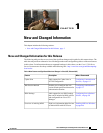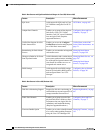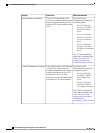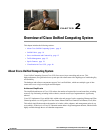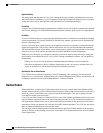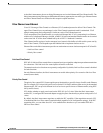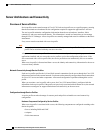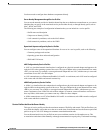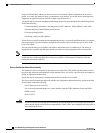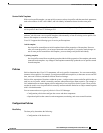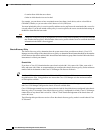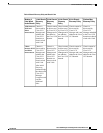
At the fabric interconnect, the server-facing Ethernet port receives the Ethernet and Fibre Channel traffic. The
fabric interconnect (using Ethertype to differentiate the frames) separates the two traffic types. Ethernet frames
and Fibre Channel frames are switched to their respective uplink interfaces.
Fibre Channel over Ethernet
Cisco UCS leverages Fibre Channel over Ethernet (FCoE) standard protocol to deliver Fibre Channel. The
upper Fibre Channel layers are unchanged, so the Fibre Channel operational model is maintained. FCoE
network management and configuration is similar to a native Fibre Channel network.
FCoE encapsulates Fibre Channel traffic over a physical Ethernet link. FCoE is encapsulated over Ethernet
with the use of a dedicated Ethertype, 0x8906, so that FCoE traffic and standard Ethernet traffic can be carried
on the same link. FCoE has been standardized by the ANSI T11 Standards Committee.
Fibre Channel traffic requires a lossless transport layer. Instead of the buffer-to-buffer credit system used by
native Fibre Channel, FCoE depends upon the Ethernet link to implement lossless service.
Ethernet links on the fabric interconnect provide two mechanisms to ensure lossless transport for FCoE traffic:
• Link-level flow control
• Priority flow control
Link-Level Flow Control
IEEE 802.3x link-level flow control allows a congested receiver to signal the endpoint to pause data transmission
for a short time. This link-level flow control pauses all traffic on the link.
The transmit and receive directions are separately configurable. By default, link-level flow control is disabled
for both directions.
On each Ethernet interface, the fabric interconnect can enable either priority flow control or link-level flow
control (but not both).
Priority Flow Control
The priority flow control (PFC) feature applies pause functionality to specific classes of traffic on the Ethernet
link. For example, PFC can provide lossless service for the FCoE traffic, and best-effort service for the standard
Ethernet traffic. PFC can provide different levels of service to specific classes of Ethernet traffic (using IEEE
802.1p traffic classes).
PFC decides whether to apply pause based on the IEEE 802.1p CoS value. When the fabric interconnect
enables PFC, it configures the connected adapter to apply the pause functionality to packets with specific CoS
values.
By default, the fabric interconnect negotiates to enable the PFC capability. If the negotiation succeeds, PFC
is enabled and link-level flow control remains disabled (regardless of its configuration settings). If the PFC
negotiation fails, you can either force PFC to be enabled on the interface or you can enable IEEE 802.x
link-level flow control.
Cisco UCS Manager GUI Configuration Guide, Release 2.0
OL-25712-04 11
Unified Fabric



